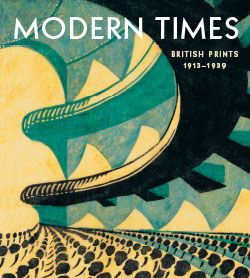Fall of the Leaf
Sybil Andrews Canadian, born England
Not on view
Fall of the Leaf is an idealized scene of harmony between man and nature. While it initially appears to be pure landscape, on closer inspection one sees, underneath the fanned-out trees, a man at a plough led by three horses whose forms mirror the patterning of the fields. The linocut is dominated by decorative and textural elements and composed of multiple tones, with overlapping curving shapes. Although such landscapes had a timeless quality and offered a sense of security, British farming was in decline. As the British historian Eric J. Hobsbawm and others have noted, by the 1930s British agriculture was no longer central to the economy and "had become a very minor factor indeed." In fact, there was such a crisis that the government had to intervene to save the British agricultural industry.
This image cannot be enlarged, viewed at full screen, or downloaded.

